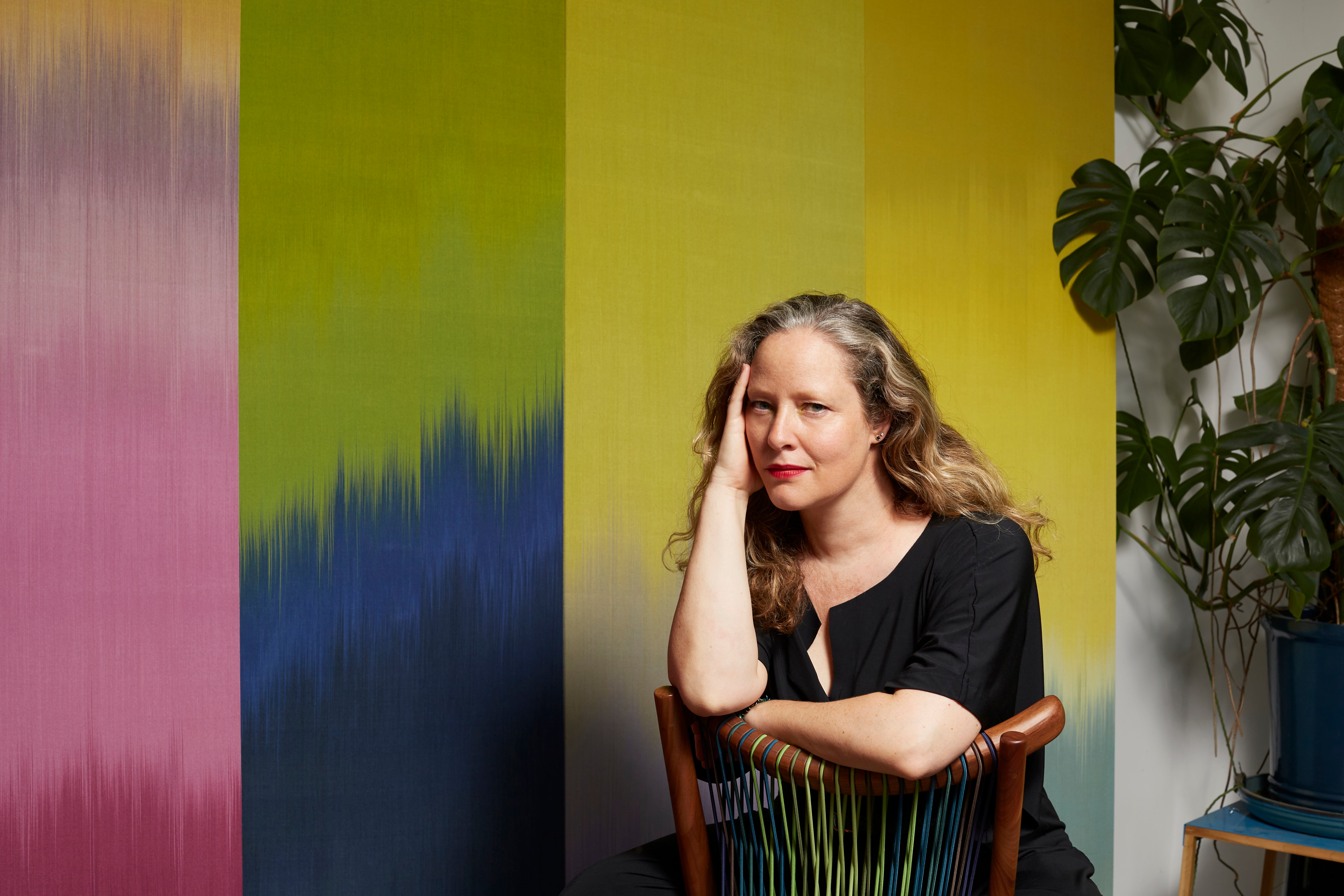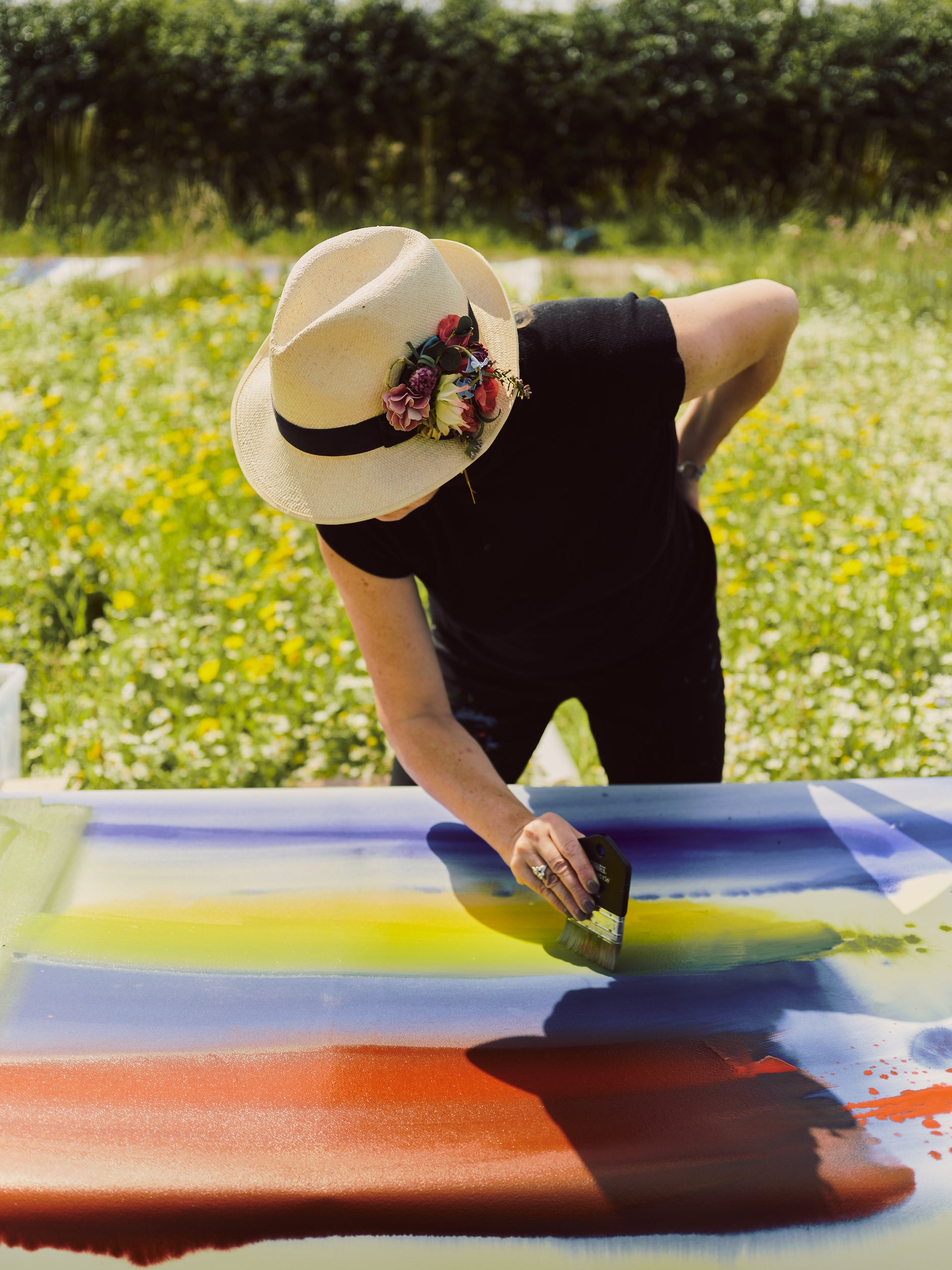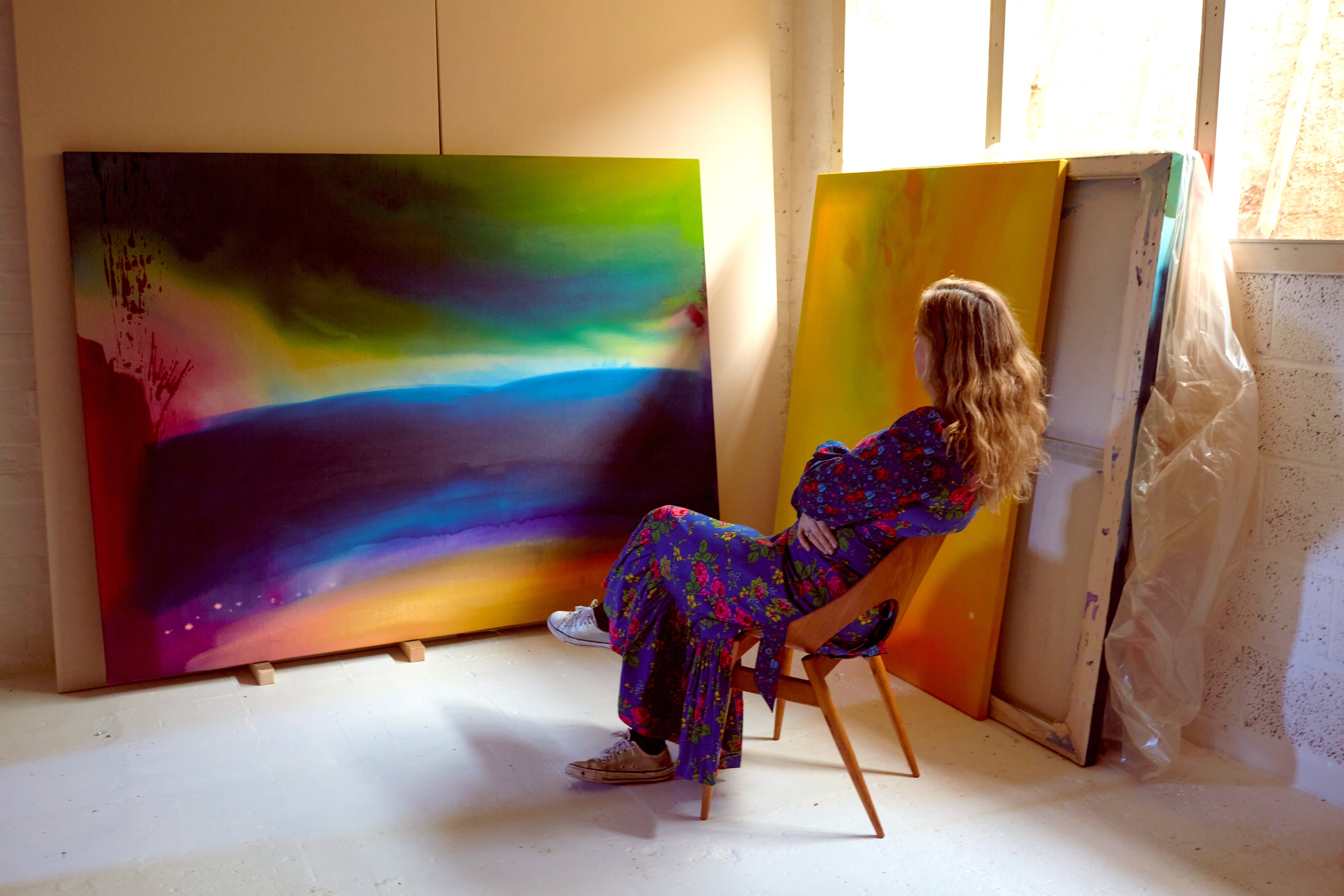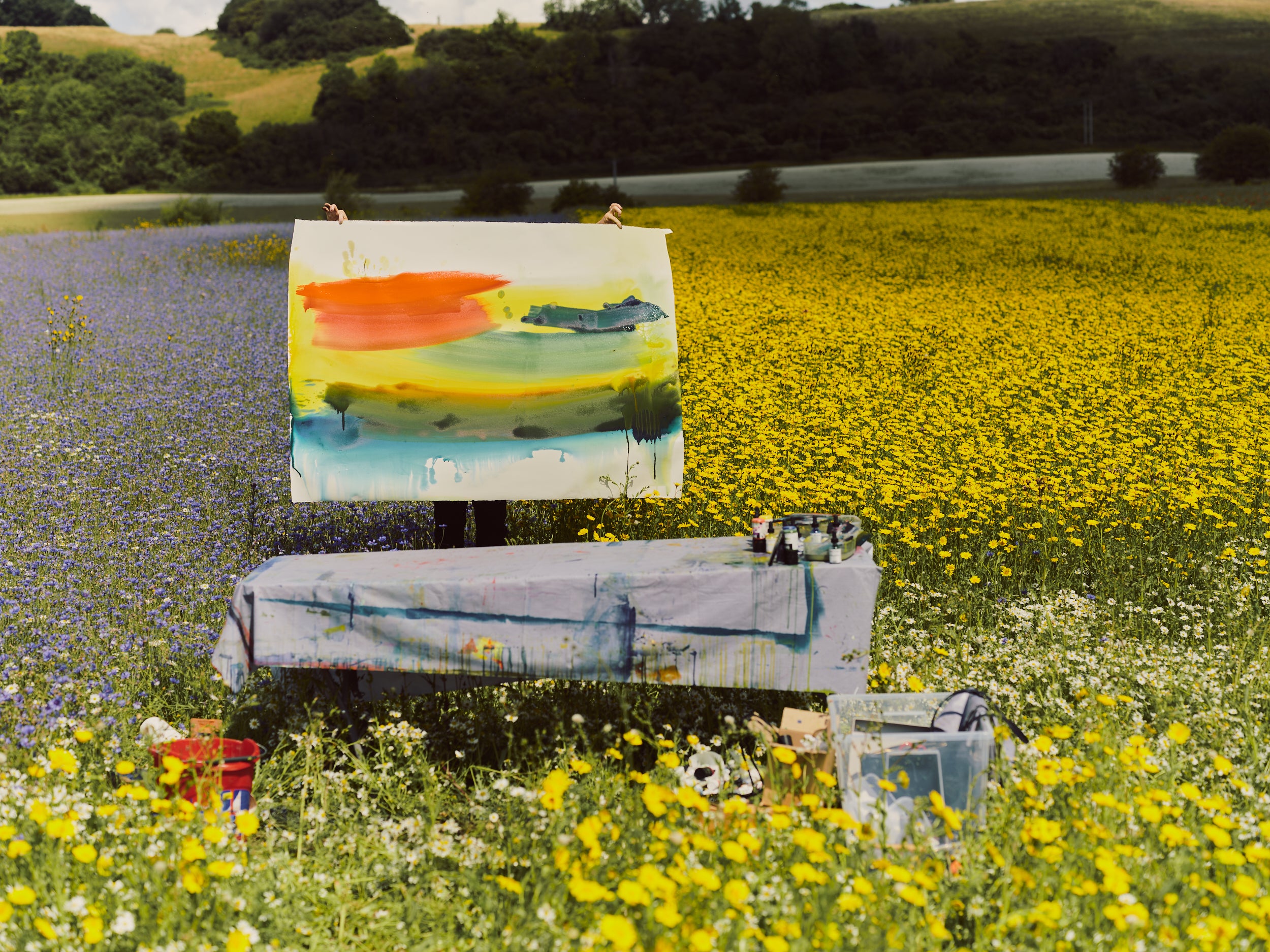Weaving the way: How textile artist Ptolemy Mann fell in love with paint
After realising she would never have children, artist Ptolemy Mann found herself challenging the patriarchal art school pressures that had stopped her following her own path, she tells Chloe Ashby

It was like a bomb went off.” The artist Ptolemy Mann is describing to me the moment when she first put paint to paper. It was mid-September 2018. She was approaching her 46th birthday. Her marriage was faltering, and she was beginning to realise she would never have children. So, she asked herself: What am I doing? Why am I here? What will I leave behind? “It probably sounds like a very self-involved way of thinking,” she tells me over the phone, with an audible eye-roll. “But I’m just being honest. I suddenly felt I had to do something more, and I knew that something was painting.”
She’d been thinking about it, more or less, for the past 25 years. Ever since a tutor had told her, during a foundation course, that she wasn’t good enough to study fine art – and that, given she was a girl and had a way with colour, she would be better off taking textile design. Which was what she ended up doing, first at Central Saint Martins and later at the Royal College of Art.
She learnt how to dye and weave cotton yarn, which early on she decided to stretch over frames, a unique approach that led to the creation of distinctive non-functional images specifically designed to hang on the wall. Since then, Mann, who was born in New York and raised on the south coast of England, has made a name for herself around the world with finely threaded panels of gently undulating colour that from afar resemble the rhythmic canvases of Mark Rothko and Agnes Martin but in reality are entirely, and determinedly, her own.

But back – or forward, I suppose – to 2018. She woke early, she remembers, and slipped out of the house and into her garden studio in East Sussex, having decided that she would try to produce one hundred paintings in a day. “I think I made it to about 60,” she says, recalling sitting cross-legged on the floor come sunset, surrounded by brightly coloured abstractions in cherry red, cobalt, acid green. “They were small and spontaneous, and they were everywhere. It didn’t matter what they looked like, or if they were any good. That wasn’t the point. The point was they existed.”
Mann tells me the exercise was less cathartic than invigorating. And although she didn’t realise it at the time, a few months later she began to suspect that the creative burst she experienced that day was tied up with her relinquishing the idea of becoming a mother. “Everyone talks about how exhausting having a baby is, and I think subconsciously I’d been holding back because of that, saving a part of myself for motherhood,” she says. “The lovely thing is, although I was sad, and I still am, it gave me this incredibly positive and productive release of energy that was entirely unexpected.”
Over the following year, Mann, who until this point in her career had been a planner, allowed herself to be guided by her instincts. She worked without a palette, and she didn’t pre-mix her paints, a combination of liquid watercolour and acrylic gouache. After dampening the paper with water, she squeezed on the pigments straight from the tube, took a thick brush, and pushed them around, swatches of vibrant and sombre shades. She tried out different types of paper, and the paintings grew.

“On the one hand, the two practices couldn’t be more opposite: painting is quick, gestural, spontaneous, wet; weaving is dry, controlled, mathematical, slow,” Mann tells me. “And yet, when you put them next to one another, something interesting happens.” Next to, or on top of. She’d dabbled with the idea of painting on her woven works before, but again she’d never acted on it – partly because, as far as she was aware, it hadn’t been done before. “I was too scared,” she says, comparing the act to vandalism, graffiti-like, almost sacrilegious. But by 2021 she was feeling bold, so she took two finished and exhibited woven works she’d created a few years earlier, coated them with water, and applied vertical and horizontal bands of paint using a heavily loaded brush. “I tried not to think about it too much. I just did it.”
It was, in a way, a rebirth. Both for those restrained and precise pieces, and for Mann, who hasn’t stopped making what she calls her “thread paintings” ever since. It’s tempting to talk of them as being art born out of suffering, and to cite the myth of the tortured artist – a myth, incidentally, that she finds annoying at best, infuriating at worst. “I think by nature I’m an optimist, and while I have made good work when I’ve been miserable, I’ve also made good work when I’ve been incredibly happy. So, I’ve never found a correlation.”

As for that male tutor who told her she wasn’t good enough to be a painter, does she wish she’d ignored his advice? “In some ways, it was one of the best things that ever happened to me,” she says. “Without him, I would never have discovered weaving, which has become a profoundly important part of my life and my work, and which has now led to this.” She pauses, and adds, with a lilt suggestive of a smile: “Actually, I wouldn’t change a thing.”
Ptolemy Mann’s solo show ‘Thread Painting’, presented by Taste Contemporary, opens on 14 May at Cromwell Place, 15 –19 May 2024: tastecontemporary.com. Her monograph, featuring an essay by Chloë Ashby, is published by Hurtwood Books on 9 May 2024: hurtwood.co.uk/art/thread-painting/
Join our commenting forum
Join thought-provoking conversations, follow other Independent readers and see their replies
Comments
Bookmark popover
Removed from bookmarks